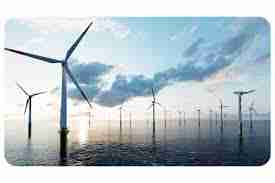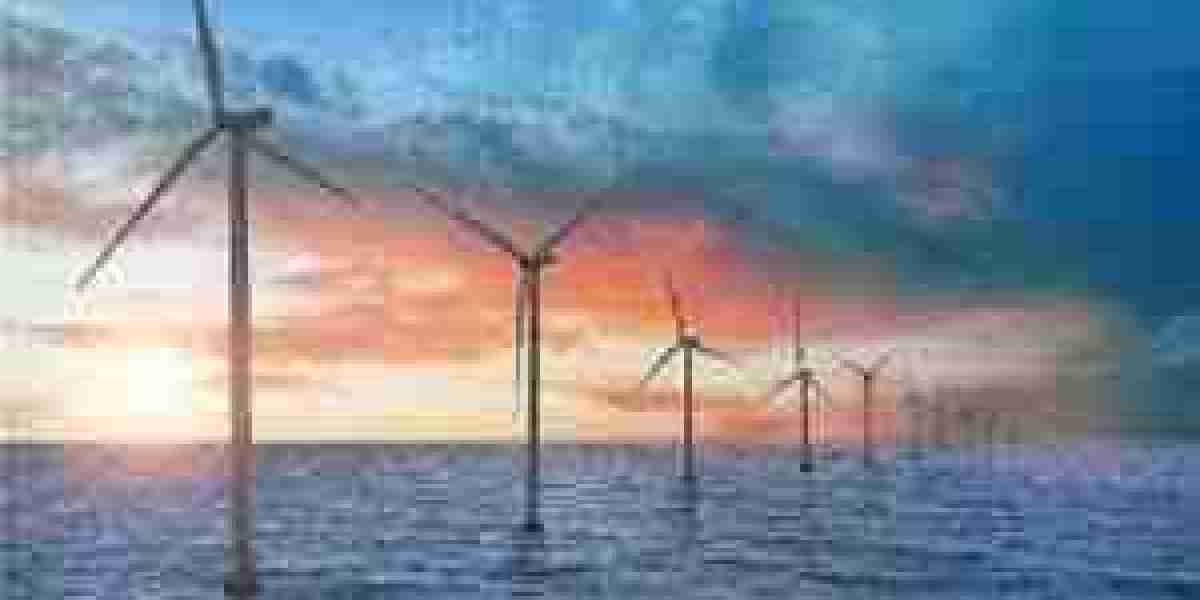The offshore wind energy market has witnessed significant recent developments that are reshaping its growth trajectory and enhancing its role in the global clean energy transition. Technological breakthroughs, policy advancements, strategic partnerships, and large-scale project announcements are driving momentum worldwide. These developments contribute to reducing costs, expanding capacity, and increasing geographic diversity. This article explores the latest trends and notable advancements in the offshore wind sector, highlighting how they collectively strengthen the market’s outlook and competitive landscape.

Technological Innovations Driving Efficiency
One of the most impactful recent developments is the rapid advancement of turbine technology. Offshore wind turbines have grown substantially in size and capacity, with leading manufacturers introducing models exceeding 15 megawatts (MW). Larger rotors and taller towers allow turbines to capture more wind energy, especially in low-wind areas, boosting overall efficiency.
Floating offshore wind technology is progressing steadily, enabling deployment in deeper waters previously inaccessible with traditional fixed-bottom foundations. Several pilot projects and commercial-scale floating farms are underway in Europe and Asia, demonstrating feasibility and setting the stage for widespread adoption.
Furthermore, integration of digital technologies such as AI-powered predictive maintenance and real-time monitoring systems improves operational reliability and reduces downtime, enhancing the profitability of offshore wind assets.
Policy and Regulatory Advances
Governments worldwide are intensifying support for offshore wind through favorable policy frameworks and regulatory reforms. Many countries have set ambitious offshore wind capacity targets aligned with net-zero emissions goals.
For example, several European nations have introduced multi-gigawatt offshore wind auction rounds, offering long-term contracts and financial incentives to stimulate investment. The United States has accelerated its leasing program in federal waters, opening new areas for commercial development along both the East and West Coasts.
Policy innovations include streamlined permitting processes, standardized environmental assessments, and increased cross-border cooperation to facilitate grid interconnections. These regulatory enhancements reduce project risks and timelines, encouraging more stakeholders to participate in the market.
Major Project Announcements and Capacity Expansion
The offshore wind market has seen a surge in large-scale project developments globally. Many new farms with capacities exceeding 1 gigawatt (GW) have been announced or are under construction, marking a shift towards mega-projects.
Notable projects include floating wind farms off the coast of Scotland and Japan, fixed-bottom farms in the North Sea, and several large U.S. projects along the Atlantic seaboard. These projects leverage technological advancements and benefit from supportive policies, helping to push offshore wind toward cost competitiveness with fossil fuels.
The increased scale of projects contributes to economies of scale in supply chains and installation, driving down the levelized cost of energy (LCOE) and making offshore wind an increasingly attractive option for utilities and corporate buyers.
Strengthening Supply Chains and Infrastructure
Recent developments also focus on bolstering supply chains and port infrastructure to meet rising demand. Several countries are investing in upgrading ports to handle larger turbine components and specialized installation vessels.
Manufacturing capacity for blades, towers, and foundations is expanding, reducing reliance on imports and mitigating risks associated with global logistics disruptions. Collaborative efforts among governments and industry players aim to localize supply chains and create jobs, enhancing community support.
Innovations in installation methods, such as self-installing foundations and automated cable laying, improve project timelines and reduce costs. This supply chain resilience is crucial for sustaining the offshore wind market’s rapid growth.
Financial Innovations and Market Dynamics
The offshore wind sector is witnessing new financial models and investment flows that support accelerated development. Green bonds, infrastructure funds, and sustainability-linked loans are increasingly used to finance projects, reflecting investor appetite for clean energy assets.
Corporate Power Purchase Agreements (PPAs) have expanded, with large companies committing to offshore wind procurement as part of their sustainability strategies. These off-take agreements provide developers with revenue certainty, facilitating project financing.
Furthermore, some markets are experimenting with auction mechanisms and contract-for-difference schemes that balance developer profitability and consumer affordability. This evolving financial landscape helps attract diverse capital sources and supports long-term market stability.
Environmental and Social Considerations
Recent developments place greater emphasis on environmental sustainability and social acceptance. Projects increasingly incorporate advanced environmental monitoring to minimize impacts on marine ecosystems, migratory birds, and fisheries.
Community engagement strategies have evolved to include early consultations, benefit-sharing programs, and transparent communication about project benefits and risks. These initiatives build trust and reduce opposition, which can delay or derail projects.
Industry-wide commitments to responsible sourcing and circular economy principles aim to reduce waste and carbon footprints associated with offshore wind manufacturing and decommissioning.
International Collaboration and Knowledge Sharing
Cross-border collaboration is accelerating through regional alliances and platforms dedicated to offshore wind development. Countries share best practices in technology, regulation, and grid integration to optimize resources and avoid duplicative efforts.
International organizations promote standardization of design codes, safety protocols, and environmental guidelines, facilitating smoother project approvals and interoperability.
Such cooperation also helps emerging markets leapfrog development stages and attract foreign investment, contributing to a more balanced global distribution of offshore wind capacity.
Conclusion
Recent developments in the offshore wind energy market—from technological advances and policy reforms to large-scale projects and financial innovation—are collectively driving a transformative phase in the industry. These progressions are lowering costs, expanding geographic reach, and enhancing sustainability, positioning offshore wind as a cornerstone of the global energy transition.
As supply chains strengthen, new markets emerge, and collaboration deepens, the offshore wind sector is poised for sustained growth and greater competitive advantage. Stakeholders who adapt and leverage these developments will be best positioned to capitalize on the vast potential of offshore wind energy in the coming decades.




